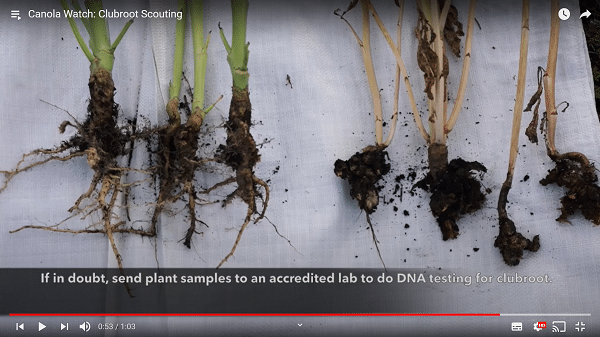
Set yourself up now for success next year
After this year’s stressful growing season, producers may want to start thinking about what they can do to set themselves up for success next year. For example, residue management needs to start while you’re on the combine this fall. Check out this article on how you can use combine settings to optimize residue management. Taller stubble height will trap more snow, increasing potential soil moisture next spring. Increasing soil organic matter will also improve soil moisture holding capacity. A fall soil nutrient test can help you plan your fertilizer program for next year, but the timing has to be right. If you haven’t started keeping records of herbicide applications already, any applications made this fall mark a good time to start — it will pay off in the long run. Soil compaction is inevitable, but it can be managed. Following the steps in the linked article can help minimize the effects of compaction on moisture retention.
Safe storage and other harvest management tips
Until the recent rain across the Prairies, in-bin drying of crops was probably the last thing on most canola producers’ minds. Not only could there be a need for it, but the safe storage of harvested canola is always of the utmost importance. Check out this recent episode of The Agronomists for more information. You can also check out these tips for drying tough and damp canola. Following the harvest management theme, there are more farmers asking about straight-cutting this year. If you’re straight-cutting for the first time, watch this video, check out these harvest tips and have a look at this recent research on pre-harvest herbicide and desiccation options for straight-combining canola. Many farmers wonder if they’re better off swathing or straight-cutting. They should read this article. Finally, use the Harvest Loss Calculator and the Combine Optimization Tool to determine if and which adjustments need to be made to increase combine efficiency and reduce grain losses.
Rate diseases for severity
If you have clubroot, blackleg or verticillium stripe in your fields, now is the time to pull plants and rate them for severity and count incidence levels. Samples can be submitted to a lab for confirmation. Try to do this before your crop is harvested or just shortly thereafter. Note that some symptoms can look the same at this time of year. If you’re finding clubroot in the field for the first time, read this. And while you’re out in the field scouting, why not count canola stems at the same time? This will allow you to compare final plant populations at maturity as well as complete an assessment of uniformity, harvestability and yield. Enter data in the CanolaCounts tool at CanolaCounts.ca and see the maps made from spring. CanolaCounts.ca data can be found here. Finally, take this quiz on clubroot scouting.
Watch for precocious germination
Canola seeds sprouting in pods prior to swathing is called “precocious germination.” It can occur with heat stress, re-wetting of pods and aster yellows. Unfortunately, there’s not much that can be done about precocious germination. Swathing at (or after) 60 per cent seed colour change on the main stem is recommended. No. 1 canola can have a maximum of five per cent damaged seed. More information on precocious germination — including management at harvest — is available here.
Should I plant winter canola or not?
Canola growers across the Prairies have been asking questions about planting winter canola. There are currently no winter canola cultivars that are registered in western Canada. Past research found that cultivars grown in other areas (like Ontario and the northern United States) do not yet survive our spring thaws and winters. Interested in learning more while we wait for winter hardiness to improve? This Canola Digest article offers a glimpse into winter canola production in Ontario. Also, OMAFRA and Kansas State University have good online resources for their areas. Fall-seeding spring canola is another practice that is not recommended in western Canada, and you can read more about that here.